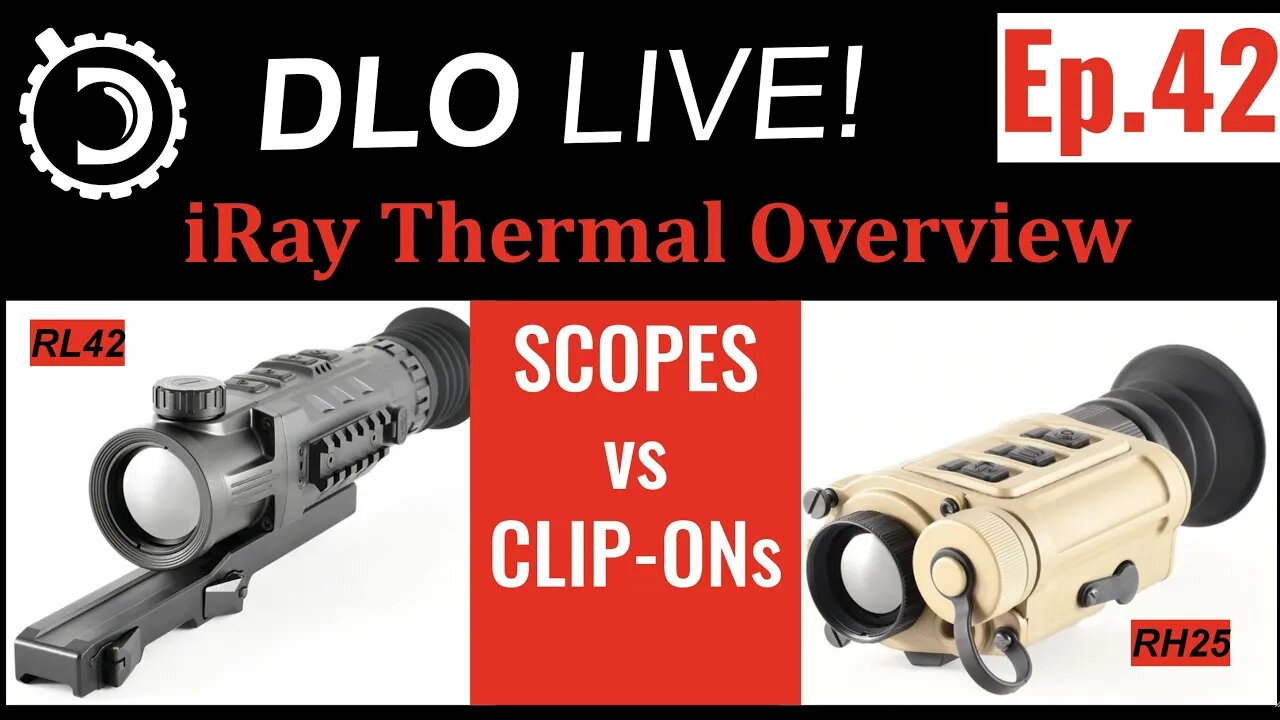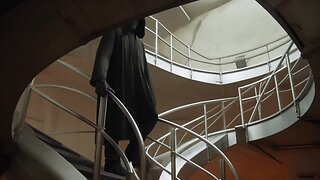Premium Only Content

DLO Live! Ep 42 iRay Thermal Overview. Scopes vs Clip-ons
In the spirit of continuing my coverage of commercial electro-optics, I decided to spend some time on iRay thermal products.
While we are at it, this is a good opportunity to discuss how thermal clip-ons work and how they are different from conventional thermal riflescopes.
I currently have two iRay products on hand. They need to go back, so this is a good time to discuss them while they are here:
iRay RL42 thermal riflescope: https://bit.ly/3Mrj4Dy
iRay Micro RH25 thermal monocular and clip-on: https://bit.ly/3lfAuqM
Post show notes:
A question came up on what would be the lowest cost of entry if you are looking for a decent clip-on, but do not want to go all out. I use Burris BTC-50. It is around $3k and gets me a 50mm lens albeit with a lower resolution sensor. https://bit.ly/3E1bb2w
If you are just new to thermal, there is a lot to be said about Accufire Incendis that can be used as both riflescope and clip-on. It is about $3k and for hunting with it, I'd stay within about 250 yards. Detection distance is much longer, of course. https://bit.ly/3LkHPj4
Nothing with thermals is cheap, but $3k is roughly the starting point for the decent stuff.
If you care more about portability, but still want to be able to use the device as a clip-on, iRay Micro RH25 linked above is a really capable general purpose device that can be used handheld, on a helmet and on the gun. However, if you are trying to use is side by side with PVS-14 and sorta blend them in with each other, you need wider FOV. PVS-14 has 40 deg FOV. There are not a lot of thermals with FOV as wide. N-Visions NOX18 is not quit that wide at 30 degrees, but wider than most and very compact: https://bit.ly/3vHH1Qi
-
 2:00:32
2:00:32
Dark Lord Of Optics
20 days agoDLO Live! Ep. 96 Why Riflescopes Break?
511 -

The Officer Tatum
4 hours agoLIVE: Left CANCELS Their Own, All White Town, NYC Shooter Update + MORE | EP 146
9.93K11 -
 LIVE
LIVE
The Rabble Wrangler
15 hours agoRimWorld with The Best in the West!
38 watching -
 LIVE
LIVE
MissesMaam
4 hours agoVariety Stream💚✨
79 watching -
 LIVE
LIVE
blackfox87
54 minutes agoHot Droppin! | PREMIUM CREATOR | #DisabledVeteran
39 watching -
 1:23:27
1:23:27
Redacted News
3 hours agoBREAKING! FBI DIRECTOR DROPS BOMBSHELL, REVEALS HIDDEN 'BURN BAGS' AND MISSING EPSTEIN FOOTAGE
128K135 -
 1:21:25
1:21:25
vivafrei
4 hours agoJoey Swoll CANCELS Himself! Oprah Closing Roads for Tsunami Evacuees? Canada Can't Find Criminals?
77.6K29 -
 1:47:35
1:47:35
Right Side Broadcasting Network
7 hours agoLIVE REPLAY: President Trump Delivers Remarks on Making Health Technology Great Again - 7/30/25
65.6K24 -
 38:23
38:23
Members Club
3 hours ago $0.75 earnedShooter Strikes NYC, WNBA Wig Meltdown, and Sweeney’s Jeans Go Viral - MC05
14.5K5 -
 33:41
33:41
The Finance Hub
5 hours ago $1.90 earnedBREAKING: NANCY PELOSI JUST GOT HIT WITH A MAJOR BOMBSHELL!!!
14.3K7